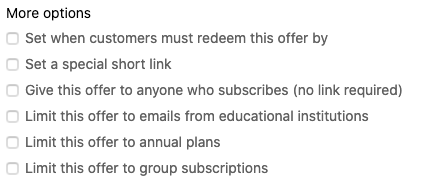Substack Continues to Rocket Forward
More and more writers — and more and more readers — are embracing the platform

Launched in 2017, Substack — the platform this newsletter uses — has thousands and thousands of paying subscribers across its publications. It’s growing so fast that the recent public disclosure of 100,000 paying subscribers is already far too low, as you’ll see if you keep reading. There are now thousands of writers using the platform, with many making a full-time living using its paid subscription model — “enough to show it’s more than a coincidence,” as Chris Best, one of the three founders, recently told Peter Kafka on his Recode Media podcast.
I’ve been following and using Substack for nearly two years. You can read my 2018 interview with another founder, Hamish McKenzie, here. I also flagged Substack as my “Site of the Year” in 2018. (Jairaj Sethi is the third co-founder.)
Substack’s acceptance and momentum is taking the company to some impressive heights. In addition to its growing subscriber base, more and more big names are breaking away from traditional outlets because of it. For instance, Andrew Sullivan will be rebooting his blog today — The Dish — on Substack, and garnered 60,000 subscribers before launch, making it instantly profitable. When people in the New York media community heard he was launching on Substack, word is their response was, “Of course.”

Even David Brooks is writing about it in the New York Times:
. . . heterodox writers are already on Substack. Matt Taibbi and Judd Legum are iconoclastic left-wing writers with large subscriber bases. The Dispatch is a conservative publication featuring Jonah Goldberg, David French, and Stephen F. Hayes, superb writers but too critical of Trump for the orthodox right. The Dispatch is reportedly making about $2 million a year on Substack. . . . This month Yascha Mounk started Persuasion, an online community to celebrate viewpoint diversity and it already has more than 25,000 subscribers.
Now, I can’t boast numbers like that, sadly, but my subscribership numbers in the hundreds, and is growing. More significantly, and mostly due to Substack’s approaches and business model, I’m a very happy writer again. Open, unpaid platforms like WordPress were fine for a while, but drive-by comments from people in foul moods or with axes to grind became just too demoralizing and distracting. Substack allows you to limit comments to paying subscribers — people who have decided that your writing is important enough for their media diet that they’re willing to pay for it, and who respect your work enough to subscribe. Alternatively, you can allow comments from anyone for a post, or keep comments off selected posts.
It’s heaven.
After a Series A investment of $15.3 million last summer, Substack may already be turning the corner as a startup, given its growth and broad acceptance. By taking a small share of every paid subscription, the company itself is based on the same recurring revenue model it advocates, and which its writers earn and defend. It’s a virtuous cycle.
Substack is also rolling out impressive improvements on a consistent basis. Over the past couple of years, they’ve developed smooth and sophisticated subscription options — for individuals, groups, and even for institutions via shared academic email domains, something that caused me to feel a slight tingle down my spine when I saw it in the menu of conditions users can apply to special subscription offers:

Last year, to encourage writers to go “all in,” Substack launched fellowships for promising writers with a top grant of $100,000, which will let the recipient live well for a year while they hone their skills (four other recipients each receive $25,000 grants). More recently, Substack announced a “Defender” service, providing their independent writers with legal advice and support if needed — in certain circumstances, they will cover up to $1 million in legal fees, and perhaps more in extraordinary situations.
They’ve also added the ability for authors to collaborate, and are currently testing the capacity for different writers to “bundle” offers so that subscribers can pay to subscribe to a set of related newsletters, creating a virtual magazine or outlet.
Substack also supports podcasts, and has plans to support videos. These approaches could supplant some of the current approaches, namely integrations with Patreon many podcasters and video streamers use to earn revenue from their work. If Substack pulls it off, the work of producing content and getting paid for those media types would be more integrated through their platform, which integrates content and commerce far better than other systems cobbling the two together.
As Best says in the interview on Recode Media, he believes subscription content is growing in popularity because:
. . . the relevant thing is how are people making the decision about what they put into their head. With something like a . . . newsletter, you kind of take a step back, and decide as your best self, like, “Hey, what do I want to be in my media diet, and what am I optimizing for, and what’s going to make my life better by subscribing to it.” . . . I think people are starting to have this sense that, “Hey, I am delegating a lot of the way I spend my attention to these various feeds, and I’m actually not happy about it.” I think they’re deciding . . . hey, I really trust this newsletter writer, and maybe I’m going to pay for that.
The issue of burnout is also something Substack is addressing with engineered solutions and writer support. Teaching a little about a virtue of the subscription model at the same time, they reassure writers that it’s OK to take a vacation, that readers will understand and stick with them. There are also ways on Substack for writers to “pause” subscriptions if they take an extended break — during these pauses, no new subscriptions are accepted, and current subscriptions are extended.
What does this kind of success mean for publishers? The opportunities seem well worth considering — cultivating community writers into a new, paid e-newsletter under your trusted brand, for instance; or, using the service to present early content to paying subscribers who want early access to new findings or perspectives. But there are also threats. Do your writers need you anymore? Are they going to go independent, and make more money? Is their brand more interesting to your community than yours? Will your incentives have to change to keep them? I’m thinking particularly about journals that rely a lot on experts and interpretation, such as Health Affairs and some economics, history, and psychology journals. Even preprint servers like SSRN may start to find that authors and author groups find there’s a better way — one that pays — to get their ideas out to their community.
The subscription model is doing more to empower writers, good thinking, and careful media consumption thanks to Substack — a very interesting platform that seems more central to the future than ever. Publishers should take a hard look at what a platform for paid email newsletters might mean for them. Substack is growing rapidly thanks to talented writers and discerning readers finding one another.
To me, Substack still has the “zing” of a pivotal part of the future of a changing information environment.